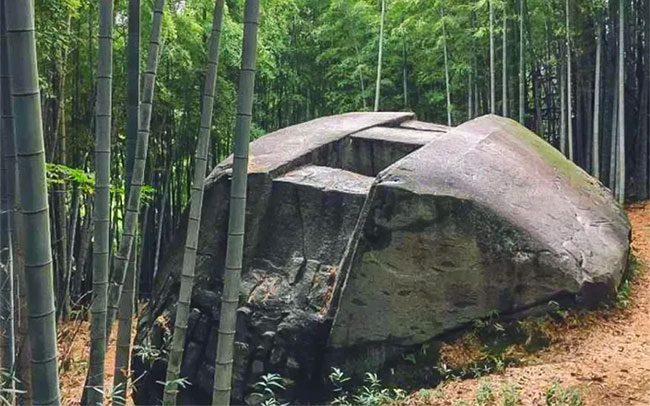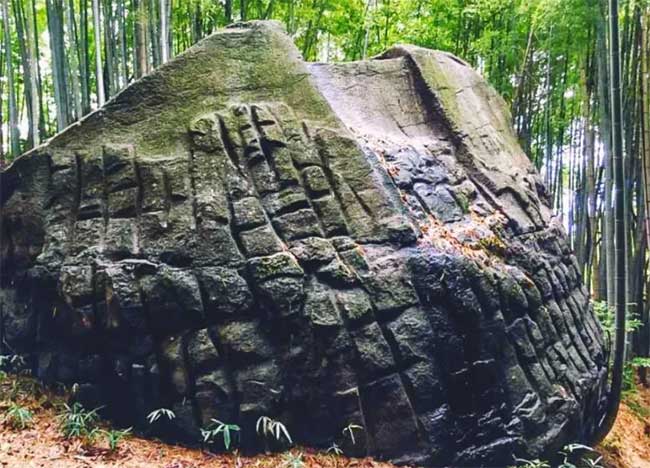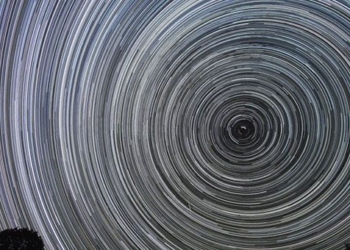The village of Asuka in Japan is home to ancient megaliths, and its peculiar rock formations may forever remain a mystery that science cannot unravel. The massive granite mounds have been carved into unusual shapes.
Asuka is an ancient region dating back to the Tumulus Period (250-552 CE), also known as Kofun Jidai, which translates to Old Mound Period. Historians from around the world are fascinated by the existence of this quaint ancient village in Japan.
During the Tumulus era, the Japanese were characterized by a type of burial mound that was popular at that time, specifically, keyhole-shaped mounds with surrounding moats.

Today, you can still find numerous large and small earthen mounds and oddly shaped stone formations scattered throughout the village. The largest and most prominent among these is known as “Masuda-no-iwafune,” which literally means “Masuda’s Rock Ship” in Japanese.
The Rock Ship weighs approximately 800 tons, measures nearly 11 meters in length, 8 meters in width, and 4.6 meters in height. The top of the stone has been smoothed and features two precisely crafted holes, each measuring about 0.3 square meters that extend down to the base of the stone.

The reason or method behind the crafting of this gigantic stone and many similar stones remains a mystery, as they seem to possess an architectural style distinct from that of later Buddhist architecture. Modern scientists suggest that this is merely part of ritual and cultural beliefs.

Upon closer observation, an interesting aspect can be noted: the central depression and the square holes on “Masuda-no-iwafune” are aligned and run parallel to the hillside on which it sits. This raises the idea that this special stone may be related to the development of the Japanese lunar calendar and early astronomical observations.

However, is it truly a mysterious stone concealing the knowledge of many advanced minds? Or is it merely part of ancient cultures and rituals, as scientists explain? This question may forever remain unanswered.




















































